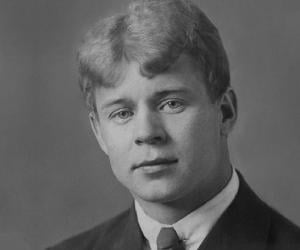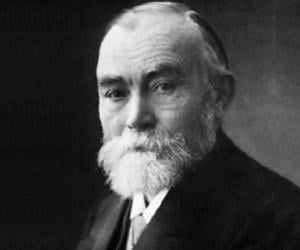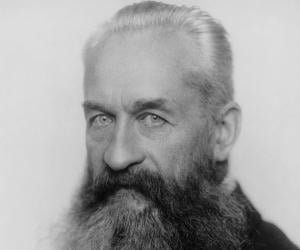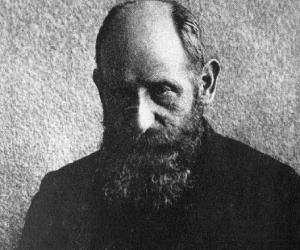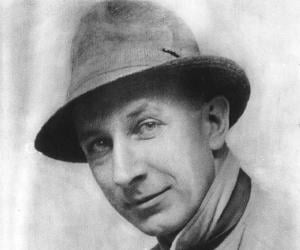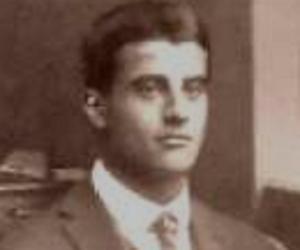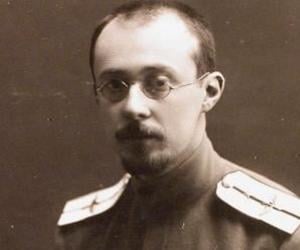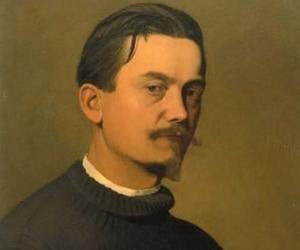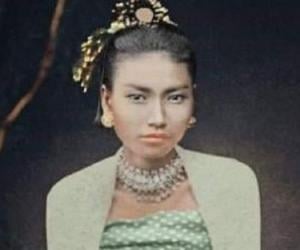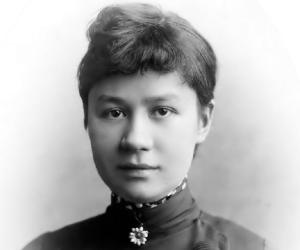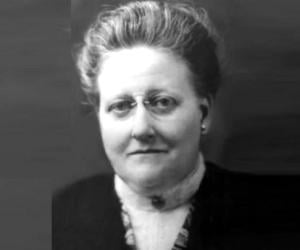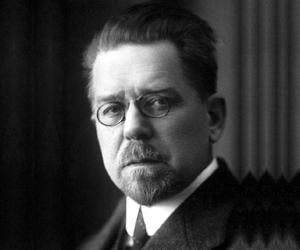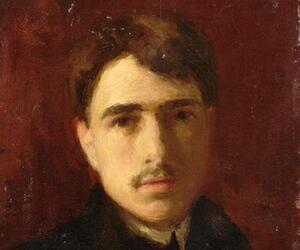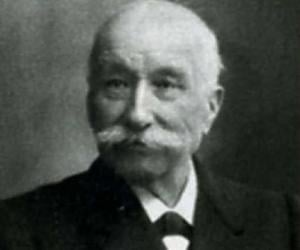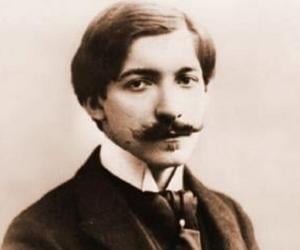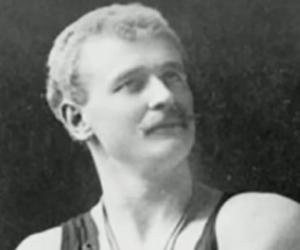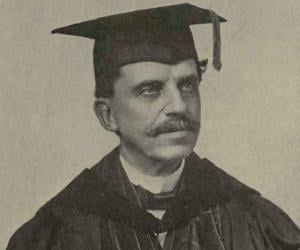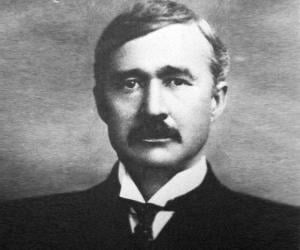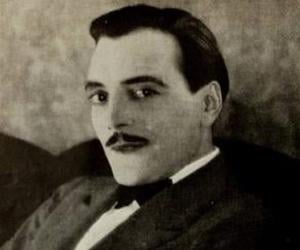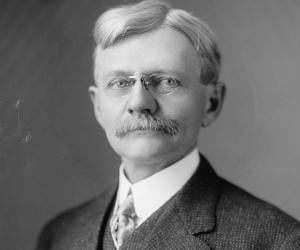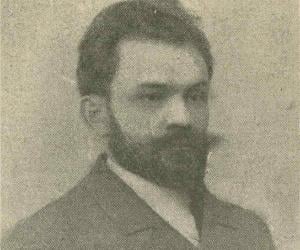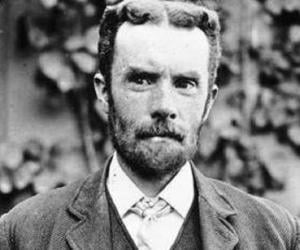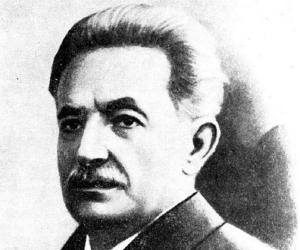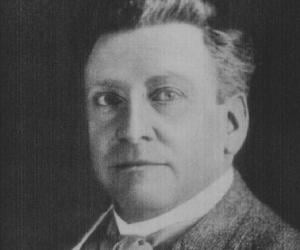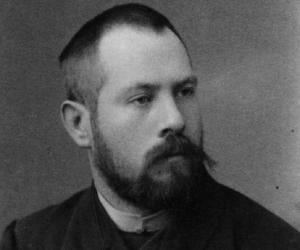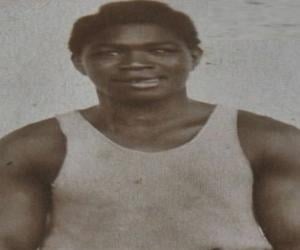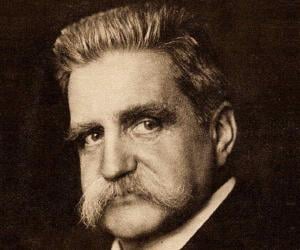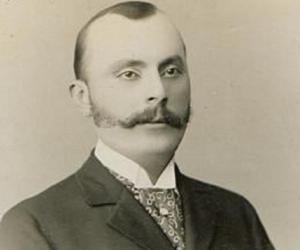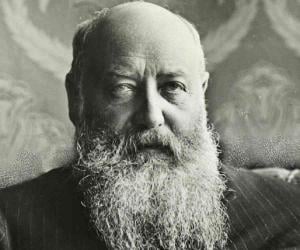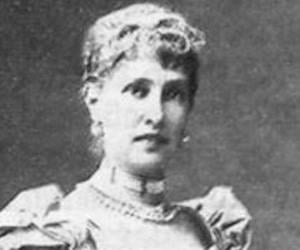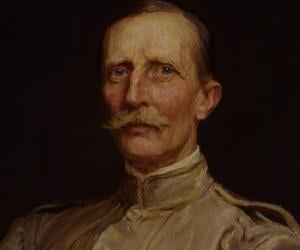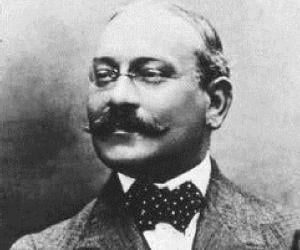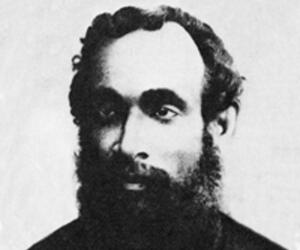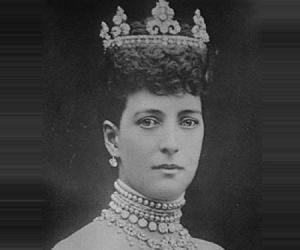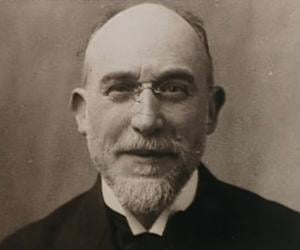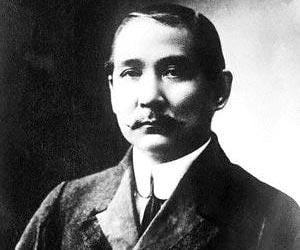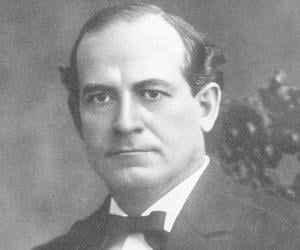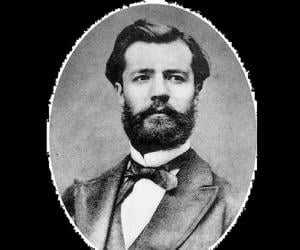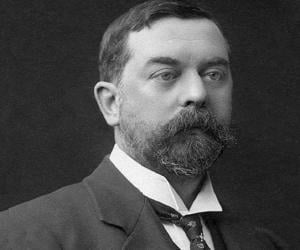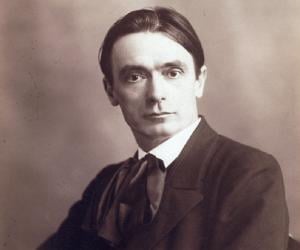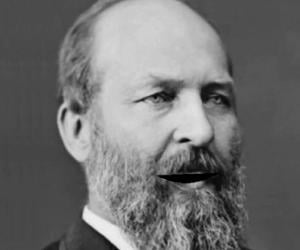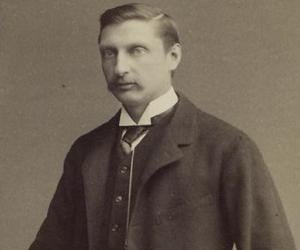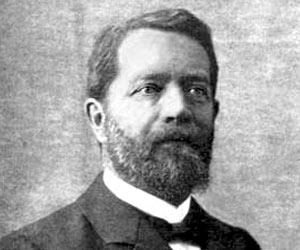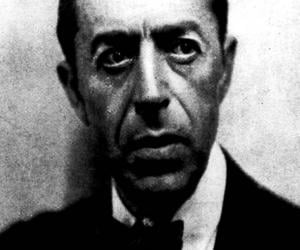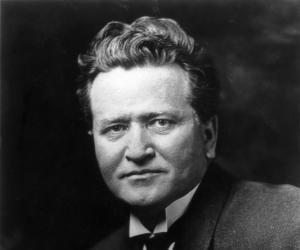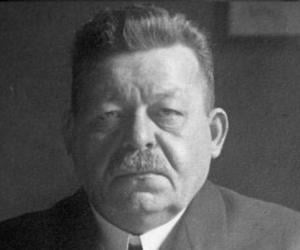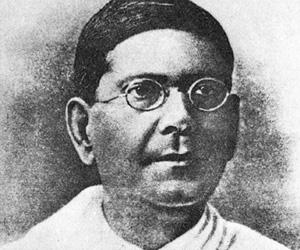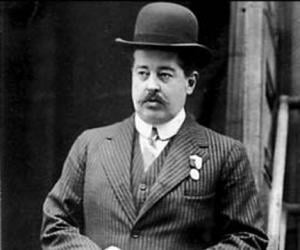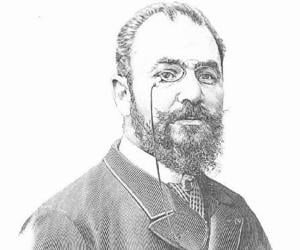Famous People Who Died In 1925
Discover the most famous people died who died in the year 1925. This list includes people like Alexandra of Denmark, Rudolf Steiner, Erik Satie, William Jennings Bryan, Reginald Claypoole Vanderbilt and many more. This list of celebrities is loosely sorted by popularity. People featured on this list, include political leaders, mathematicians, military leaders and artists who died in 1925. This list includes people from United States, Germany, United Kingdom & France and many more countries.
Vote for Your Favourite People Who Died In 1925
Right IconThis ranking is based on an algorithm that combines various factors, including the votes of our users and search trends on the internet.
1
Alexandra of Denmark(Former Queen Consort of the United Kingdom and British Dominions (1901 - 1910))
Birthdate: December 1, 1844
Sun Sign: Sagittarius
Birthplace: Copenhagen, Denmark
Died: November 20
Alexandra of Denmark was the queen of the U.K. and the empress of India from 1901 to 1910, as the wife of King Edward VII. Her style of dressing inspired English fashion back then. She supported her son George V’s campaign against Germany, with the Allies, during World War I.
2
Erik Satie(French Composer and Pianist Known for His Work ‘Gymnopédies’)
Birthdate: May 17, 1866
Sun Sign: Taurus
Birthplace: Honfleur, France
Died: July 1
Erik Satie was a French pianist and composer. An influential artist during his time, Satie's works served as a predecessor to later artistic movements like repetitive music, minimalism, and the Theatre of the Absurd. Apart from being a musician, Erik Satie was also a prolific writer, who contributed to publications, such as Vanity Fair and 391.
3
Sun Yat-Sen(Provisional President of the Republic of China (January - March 1912))
Birthdate: November 12, 1866
Sun Sign: Scorpio
Birthplace: Cuiheng, Zhongshan, China
Died: March 12
Chinese revolutionary Sun Yat Sen, also known as the "Father of the Nation" in China, ousted the Qing Dynasty in 1911. He was the first leader of the Nationalist Party of China and laid down the Three Principles of the People, which included nationalism, democracy, and livelihood.
Birthdate: March 19, 1860
Sun Sign: Pisces
Birthplace: Salem, Illinois, United States
Died: July 26
William Jennings Bryan had served as the U.S. secretary of state under President Woodrow Wilson and had also been the U.S. representative from Nebraska's 1st district. He ran for president thrice, though unsuccessfully. He also banned the teaching of evolution in schools, leading to the Scopes Monkey Trial.
Birthdate: July 29, 1841
Sun Sign: Leo
Birthplace: Constantinople, Ottoman Empire
Died: November 19
Henri Fayol was a French mining engineer, author, mining executive, and director of mines. He is credited with developing a theory of business administration called Fayolism. Along with Frederick Winslow Taylor, Henri Fayol is credited with founding modern management methods.
6
John Singer Sargent(American Expatriate Artist and One of the Leading Portrait Painters of His Generation)
Birthdate: January 12, 1856
Sun Sign: Capricorn
Birthplace: Florence, Italy
Died: April 14
John Singer Sargent, an artist active in the late 19th and early 20th centuries, was considered the "leading portrait painter of his generation." Prolific in his output, he created more than 2,000 watercolors and around 900 oil paintings. He also made numerous sketches and charcoal drawings. He painted with remarkable technical acumen and was internationally known for his expertise.
7
Rudolf Steiner( Austrian Occultist, Social Reformer and Founder of 'Anthroposophy' Spiritualist Movement)
Birthdate: February 27, 1861
Sun Sign: Pisces
Birthplace: Hungary ,Austrian
Died: March 30
Austrian philosopher and architect and Rudolf Steiner gained fame as a literary critic and published works such as The Philosophy of Freedom. His interests included esotericism and clairvoyance. He termed his work spiritual science. He designed the Goetheanum and also laid down concepts such as Waldorf education and biodynamic agriculture.
Birthdate: August 12, 1880
Sun Sign: Leo
Birthplace: Factoryville, Pennsylvania, United States
Died: October 7
Birthdate: March 17, 1862
Sun Sign: Pisces
Birthplace: New Orleans, Louisiana, United States
Died: March 1
Birthdate: June 22, 1856
Sun Sign: Cancer
Birthplace: Bradenham, England
Died: May 14
Birthdate: April 25, 1849
Sun Sign: Taurus
Birthplace: Düsseldorf
Died: June 22
Felix Christian Klein was a German mathematician and educator remembered for his work on complex analysis, group theory, and non-Euclidean geometry. He is also popular for his work on the relationship between group theory and geometry. He is credited with teaching advanced courses to students like Gregorio Ricci-Curbastro, who went on to become a renowned mathematician in his own right.
12
Sergei Yesenin
(One of the Most Popular Russian Lyric Poets of the 20th Century)
Birthdate: October 3, 1895
Sun Sign: Libra
Birthplace: Konstantinovo, Russia
Died: December 28
Born into a peasant family, Russian lyrical poet Sergei Yesenin was a significant figure of Imaginism. Known as "the last poet of wooden Russia," Yesenin soared to fame with works such as Radunitsa. He later committed suicide in a hotel, having written his last poem in his own blood.
Birthdate: March 24, 1873
Sun Sign: Aries
Birthplace: Odessa
Died: November 5
Born in Russia, Sigmund Rosenblum was the illegitimate son of a doctor. He later joined the British intelligence services as a spy under the alias Sidney Reilly and mostly reported on the oil deals of Russia. He wished to topple the Bolshevik regime but was eventually executed by Russian authorities.
14
Gottlob Frege
(Philosopher)
Birthdate: November 8, 1848
Sun Sign: Scorpio
Birthplace: Wismar, Germany
Died: July 26
15
Georgy Lvov
(8th Prime Minister of Russia (March 1917 - July 1917))
Birthdate: November 2, 1861
Sun Sign: Scorpio
Birthplace: Dresden, Germany
Died: March 7
Russian statesman Georgy Lvov created history by becoming the first prime minister of the Russian provisional government formed during the 1917 February Revolution. A qualified lawyer, he worked in civil service for a few years, before joining the Kadet Party, or the Constitutional Democratic Party.
16
Josef Breuer
(Austrian Physician)
Birthdate: January 15, 1842
Sun Sign: Capricorn
Birthplace: Vienna, Austria
Died: June 20
Psychoanalyst and physician Josef Breuer inspired what later came to be known as Sigmund Freud’s cathartic method to treat mental ailments. His experiments with his patient Anna O. proved the therapeutic effect of the talking cure. He had also conducted research on the respiratory cycle and discovered the Hering-Breuer reflex.
Birthdate: June 14, 1855
Sun Sign: Gemini
Birthplace: Primrose
Died: June 18
Birthdate: February 4, 1871
Sun Sign: Aquarius
Birthplace: Heidelberg, Germany
Died: February 28
Friedrich Ebert was a German politician who served as the president of Germany from 1919 to 1925. He played an important role during the German Revolution of 1918–19, which helped replace the federal constitutional monarchy with a parliamentary republic, which came to be known as the Weimar Republic. Friedrich Ebert also worked towards restoring peace in Germany.
19
George Bellows
(Painter, Artist, University teacher)
Birthdate: August 19, 1882
Sun Sign: Leo
Birthplace: Columbus
Died: January 8
20
Pier Giorgio Frassati
(Activist)
Birthdate: April 6, 1901
Sun Sign: Aries
Birthplace: Turin, Italy
Died: July 4
21
Alexander Friedmann
(Physicist and Mathematician Best Known for His Pioneering Theory That the Universe Was Expanding)
Birthdate: June 16, 1888
Sun Sign: Gemini
Birthplace: St. Petersburg, Russia
Died: September 16
Though born to a ballet dancer father and a pianist mother, Alexander Friedmann grew up to be a talented mathematician and cosmologist. He had served as an aviator during World War I and later also taught. He died of typhoid at age 37 after eating a pear during his honeymoon.
22
Félix Vallotton
(Swiss and French Painter and Printmaker)
Birthdate: December 28, 1865
Sun Sign: Capricorn
Birthplace: Lausanne, Switzerland
Died: December 29
Born in Switzerland, Félix Vallotton later moved to Paris to study art and grew to be one of the prominent members of the Les Nabis. Renowned for his woodcuts, he mostly focused on nudes and interiors. Politically conscious, he often infused political themes in his art, such as The Demonstration.
Birthdate: December 13, 1859
Sun Sign: Sagittarius
Birthplace: Mandalay, Myanmar
Died: November 24
24
Johanna van Gogh-Bonger
(Multilingual Dutch Editor and Translator)
Birthdate: October 4, 1862
Sun Sign: Libra
Birthplace: Amsterdam
Died: September 2
25
Amy Lowell
(Poet, Writer, Socialite)
Birthdate: February 9, 1874
Sun Sign: Aquarius
Birthplace: Brookline
Died: May 12
Birthdate: November 5, 1870
Sun Sign: Scorpio
Birthplace: Kolkata, India
Died: June 16
27
Władysław Reymont
(Polish Novelist)
Birthdate: May 7, 1867
Sun Sign: Taurus
Birthplace: Kobiele Wielkie, Poland
Died: December 5
Though trained as a tailor, Władysław Stanisław Reymont never worked as one and joined a traveling theater instead. He later devoted himself to writing and gained fame with novels such as The Promised Land and Revolt. His 4-volume novel The Peasants won him the Nobel Prize and was also filmed.
Birthdate: January 14, 1880
Sun Sign: Capricorn
Birthplace: Staten Island, New York City, New York, United States
Died: September 4
29
Roger de La Fresnaye
(Painter)
Birthdate: July 11, 1885
Sun Sign: Cancer
Birthplace: Le Mans, France
Died: November 27
30
Clément Ader
(engineer, inventor, aerospace engineer)
Birthdate: February 4, 1841
Sun Sign: Aquarius
Birthplace: Muret
Died: March 5
Clément Ader was a French engineer and inventor best remembered for his pioneering work in aviation. Widely regarded as the father of aviation in France, Clément Ader is still revered for his early powered-flight efforts. His aircraft models are still displayed at Paris' Musée des Arts et Métiers.
Birthdate: December 10, 1870
Sun Sign: Sagittarius
Birthplace: Ghent, Belgium
Died: June 6
32
Eugen Sandow
(German Bodybuilder and Showman)
Birthdate: April 2, 1867
Sun Sign: Aries
Birthplace: Königsberg, Kingdom of Prussia
Died: October 14
Height: 5'9" (175 cm)
Birthdate: February 15, 1843
Sun Sign: Aquarius
Birthplace: South Worthington, Massachusetts, United States
Died: December 6
Birthdate: October 14, 1857
Sun Sign: Libra
Birthplace: Portland, Indiana, United States
Died: April 13
35
Max Linder
(French Comedian and the World's First Movie Star)
Birthdate: December 16, 1883
Sun Sign: Sagittarius
Birthplace: Cavernes, Saint-Loubès, Gironde, French Third Republic
Died: November 1
French comedian, filmmaker, and screenwriter of the silent-film era, Gabriel Leuvielle, better known as Max Linder, is remembered as the world’s first movie star. He is known to have influenced Charlie Chaplin. He also created his iconic character Max, beginning with The Skater's Debut, and played it in several comedies later.
36
Thomas R. Marshall
(Politician, Lawyer)
Birthdate: March 14, 1854
Sun Sign: Pisces
Birthplace: North Manchester
Died: June 1
37
Stefan Żeromski
(Polish Novelist and Dramatist Famous for His Epic Novel 'Chłopi')
Birthdate: October 14, 1864
Sun Sign: Libra
Birthplace: Strawczyn, Poland
Died: November 20
Stefan Żeromski was a dramatist and novelist who received four nominations for the prestigious Nobel Prize in Literature during his illustrious career. He was a leading Polish neoromantic writer and many of his novels like Dzieje grzechu and Przedwiośnie were adapted into films. Stefan Żeromski's works have also been translated into many languages including Croatian.
Birthdate: May 21, 1851
Sun Sign: Gemini
Birthplace: Paris, France
Died: September 29
Léon Bourgeois was a French statesman known for his progressive political ideals. He studied law as a young man and soon entered politics. With time, he steadily rose through the political ranks and became the prime minister of France in 1895. He promoted social insurance schemes, economic equality, controlled disarmament, economic sanctions, and expanded educational opportunities.
39
Oliver Heaviside
(Mathematician, Physicist, Engineer, Telegraphy)
Birthdate: May 18, 1850
Sun Sign: Taurus
Birthplace: Camden Town
Died: February 3
Oliver Heaviside was an English mathematician and physicist. He invented a new technique for solving differential equations and independently developed vector calculus. He is also credited with rewriting Maxwell's equations in the form commonly used today. He formulated the telegrapher’s equations and invented the Heaviside step function as well. In 1922, he received the Faraday Medal.
Birthdate: January 18, 1848
Sun Sign: Capricorn
Birthplace: Siria, Transilvania, Romania
Died: August 17
41
William Lever, 1st Viscount Leverhulme
(Entrepreneur)
Birthdate: September 19, 1851
Sun Sign: Virgo
Birthplace: Bolton, England
Died: May 7
42
Lovis Corinth
(German Artist)
Birthdate: July 21, 1858
Sun Sign: Cancer
Birthplace: Gvardeysk, Russia
Died: July 17
Lovis Corinth was a German writer and artist whose work as a printmaker and painter realized a synthesis of expressionism and impressionism. An important member of the Berlin Secession group, Corinth went on to serve as the group's president as Max Liebermann's successor. Apart from creating landscapes and portraits of extraordinary vitality, Lovis Corinth also painted biblical scenes and nudes.
43
Battling Siki
(French Light Heavyweight Boxer)
Birthdate: September 16, 1897
Sun Sign: Virgo
Birthplace: Saint-Louis, Senegal
Died: December 15
44
Hjalmar Branting
(Former Prime Minister of Sweden Who Served for Three Terms Between 1920 and 1924)
Birthdate: November 23, 1860
Sun Sign: Sagittarius
Birthplace: Stockholm, Sweden
Died: February 24
One of the prominent names in the formation of the Social Democratic Party of Sweden and also its leader from 1907 to 1925, Karl Hjalmar Branting served thrice as the Prime Minister of Sweden between 1920 and 1925. In 1921, the father of socialism in Sweden was awarded Nobel Peace Prize together with Norwegian diplomat Christian Lous Lange.
45
Alexandru Marghiloman
(Statesman)
Birthdate: July 4, 1854
Sun Sign: Cancer
Birthplace: Buzău, Romania
Died: May 10
46
Christian Krohg
(Naturalist painter)
Birthdate: August 13, 1852
Sun Sign: Leo
Birthplace: Vestre Aker, Oslo
Died: October 16
Christian Krohg was a Norwegian painter, author, illustrator, and journalist. From 1909 to 1925, he served at the Norwegian Academy of Arts as its first professor, apart from serving as the academy's director. Inspired by realism, Christian Krohg produced several portraits of people including that of his wife Oda Krohg. He received several international and national awards during his career.
Birthdate: February 10, 1858
Sun Sign: Aquarius
Birthplace: New Orleans, Louisiana, United States
Died: December 22
48
George Taubman Goldie
(British Colonial Administrator Who Had a Major Role in Founding Nigeria)
Birthdate: May 20, 1846
Sun Sign: Taurus
Birthplace: Douglas, Isle of Man
Died: August 20
British colonial administrator George Taubman Goldie who is known for his efforts in founding the country Nigeria. He led the Royal Niger Company and marked clear boundaries of control in his negotiations with the French and the German authorities. He was eventually knighted for his achievements.
49
Louis Feuillade
(French Silent-Era Filmmaker Known for His Crime Film Serials)
Birthdate: February 19, 1873
Sun Sign: Pisces
Birthplace: Lunel, France
Died: February 25
French silent-era director Louis Feuillade is remembered primarily for his crime film serials such as Fantômas, Judex, and Les Vampires. Initially a journalist, he began his career in the movie industry as a screenwriter. His powerful films breathed life into the French film industry, which, back then, was suffering due to foreign competition.
50
Surendranath Banerjee
(Politician)
Birthdate: November 10, 1848
Sun Sign: Scorpio
Birthplace: Kolkata, India
Died: August 6
